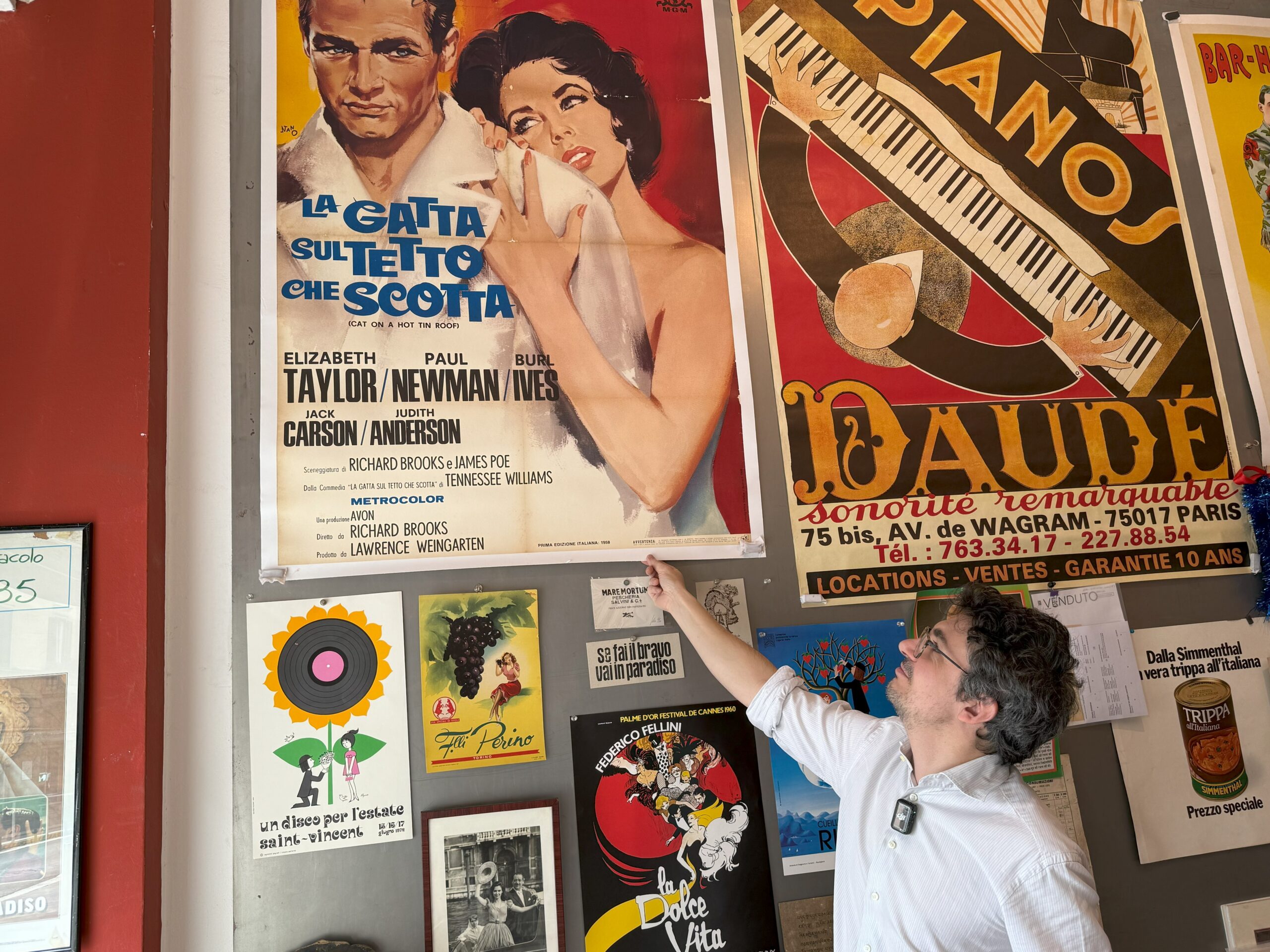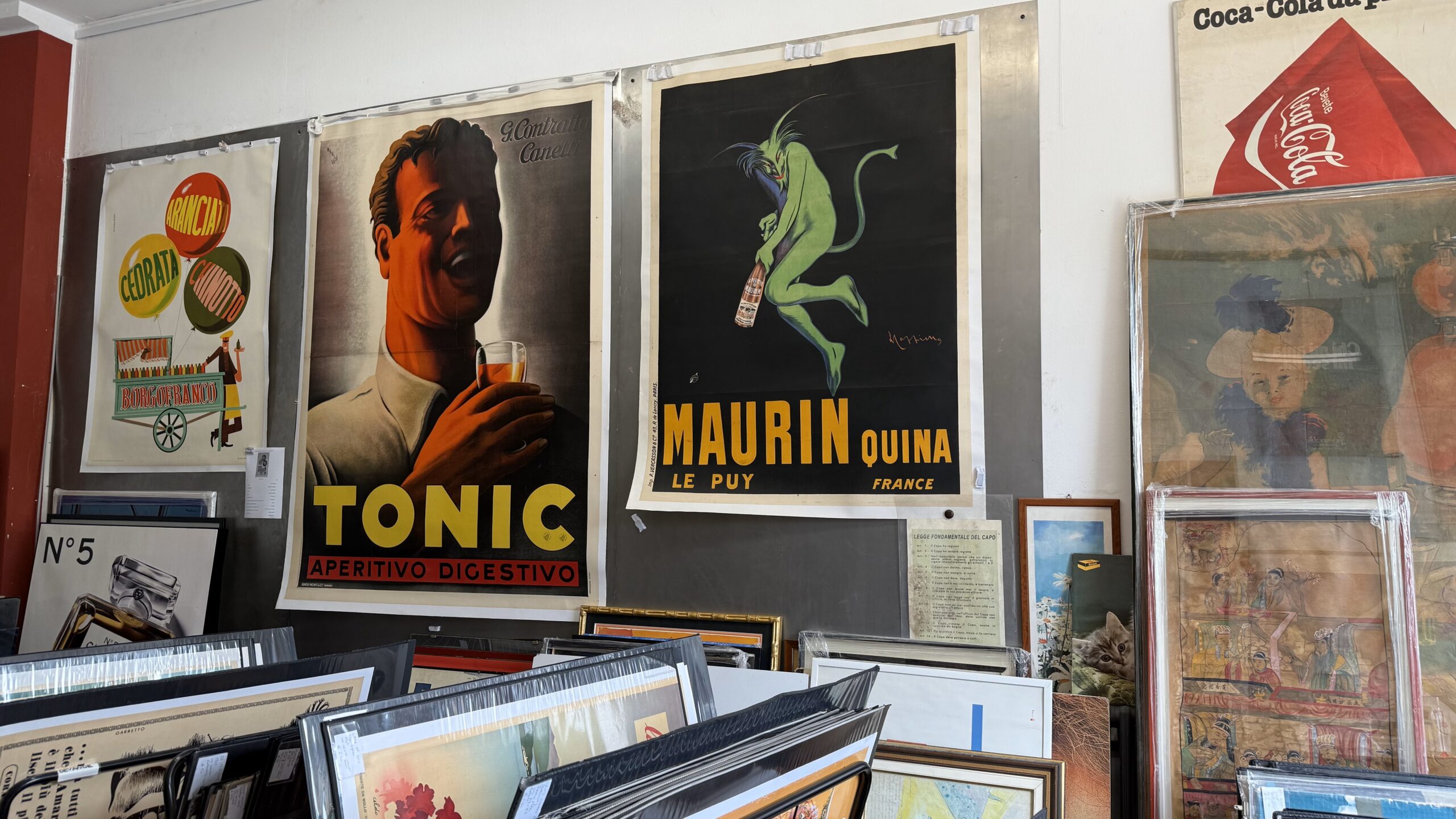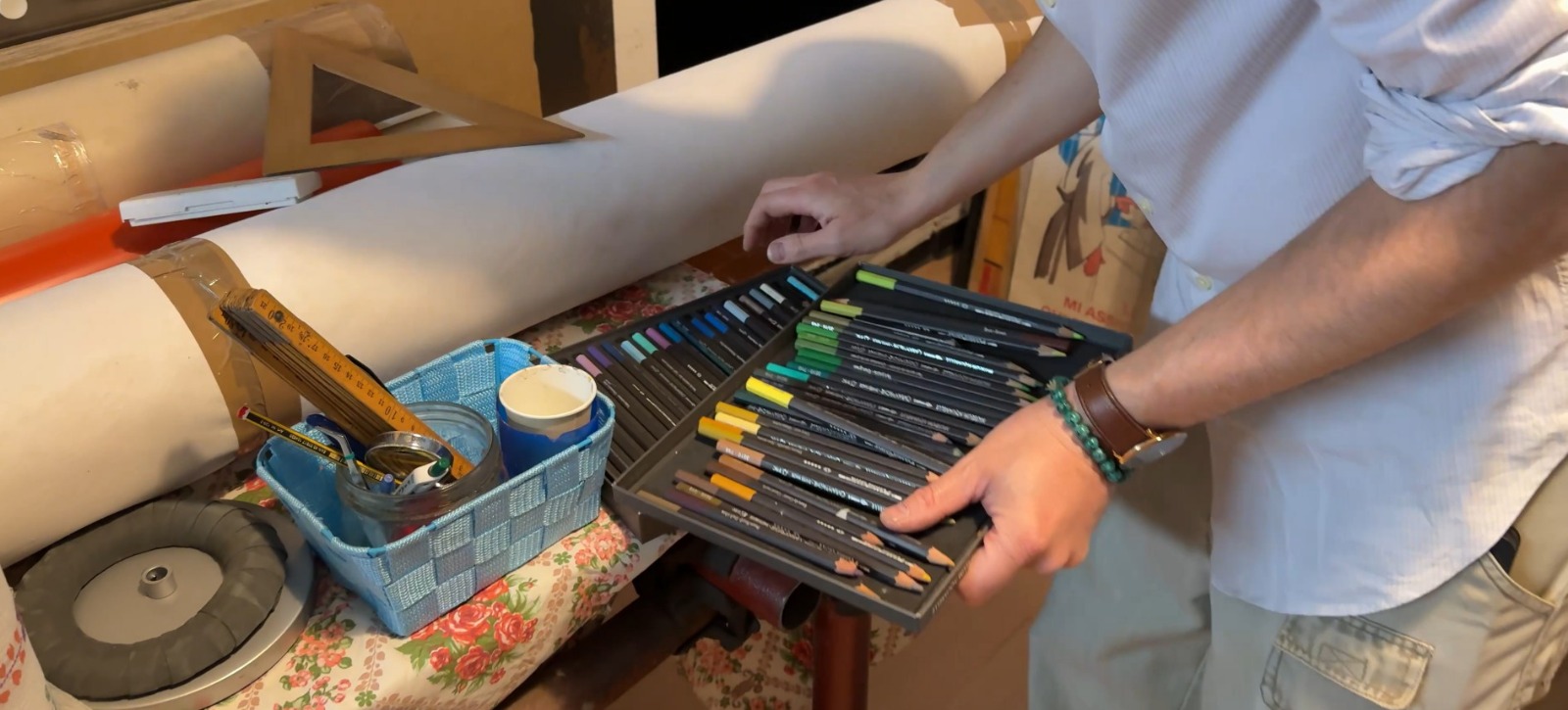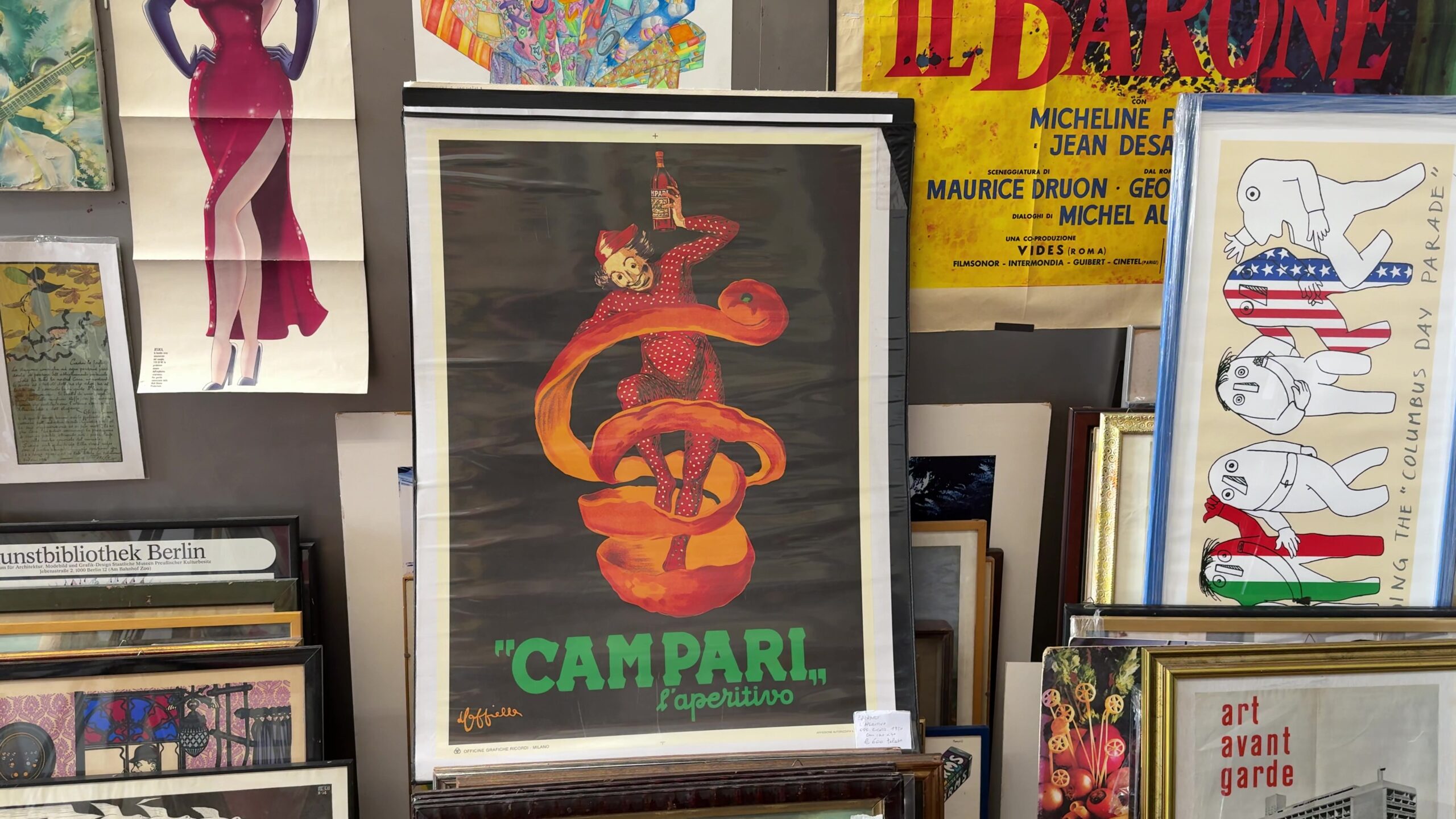«The ambition is to develop in Italy a true appreciation for a real art form: the poster». This is the goal of Andrea Re and his father Edoardo. Milano Manifesti, located in the Isola district, is a genuine art gallery where it is possible to admire original posters of all kinds. The prints fill every space in the shop, and their colors bring the entire environment to life.

How everything begun
The business opened in 2014, after Edoardo (Andrea’s father) decided to create a space to share his passion for vintage posters. «Having always had a passion for posters, he began collecting many from various artists, from Leonetto Cappiello to Armando Testa, building up a collection of 10,000 pieces». After retiring, he decided to open this shop, creating a space for exhibition, sales, and meetings among enthusiasts of this fascinating art form.
«Then I stepped in, being also emotionally connected to the cinematic side and to movie posters and flyers. So we decided to divide the tasks a bit. In fact, when a customer asks for a ‘Pulp Fiction’ or ‘Star Wars’ poster, my father immediately says, ‘Look, I’ll let you talk to my son.’ For other advertising posters that I’m familiar with, I handle it, but if there’s something else, I obviously ask him, the store’s poster pioneer».
The techniques behind the making of a stamp
Posters also differ based on the techniques used to create them. The earliest prints were made through lithography. But how did it work? «Large stones were used on which the initial drawing was made with a greasy pencil, a lapis. Then a washing process with water and chemicals was carried out, so that for each color of the poster a separate stone was used». It was a very laborious process.

This method lasted until the ’40s-’50s, then offset printing allowed many more copies to be made in less time than lithography. Unlike lithography, offset prints show a typical pixelation. «Nowadays, there are still some workshops experimenting with lithographic printing. Others work with woodcut printing, using wooden matrices and a press to print on wood».
Bringing pieces of art back to life
Milano Manifesti also takes care of restoring these timeless works. «For restorations, we use a special type of Caran d’Ache pencil made in Geneva». They are watercolor pencils suitable for conservation restorations. Then the exact color must be found through various tests to apply the precise shade for fixing tears and creases. «We absolutely do not want to alter or falsify the image and the poster, we only want to restore it».

One of the advertising greatest: Leonetto Cappiello
In the shop, it’s possible to notice how taste and aesthetics have evolved over the years, observing works made by artists like Leonetto Cappiello. Among the most famous by the Livornese artist is certainly “Spiritello” or “Diavoletto”. The work exists in two versions; the first dates back to 1921, during the period of Cappiello’s Nouvelle Affiche. The poster made for Bitter Campari became a true icon, so much so that in 1950 Officine Grafiche Ricordi – Milan reissued it with a different wording: “Campari l’aperitivo” instead of simply Campari, but leaving both the size and the original image unchanged.

Treated like a treasure, behind a curtain hides a unique Cappiello work. It’s a poster for “Cordial Campari”, «a piece we alone have». It was lithographed on stone in 1921 and measures 140 x 200 centimeters. It is divided into two sheets originally sized 100 x 140. When the poster was put up, the billposter had to join the two parts so the poster could be seen as a whole. This was because the printing house could only print sheets up to those dimensions. Finally, the poster was glued onto a very thin canvas that served as a frame.
Milano Manifesti is not just a shop, but a true treasure chest of history and art, where past and present meet to preserve and enhance the timeless uniqueness of original posters.
